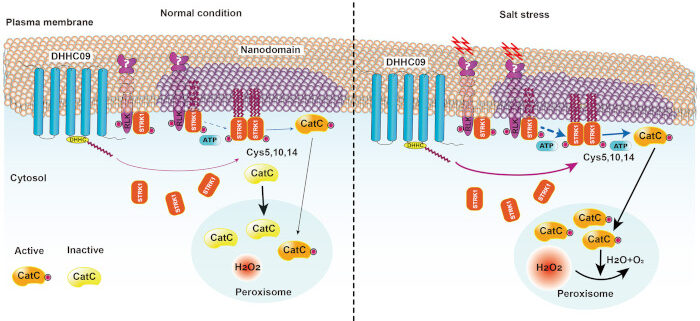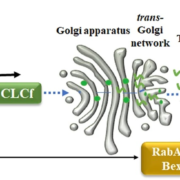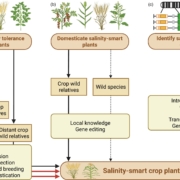A zinc finger protein promotes salt signaling in rice via transphosphorylation
Tian et al. identify the zinc finger protein DHHC09 as a regulator of rice salt tolerance.
https://doi.org/10.1093/plcell/koae001
By Ye Tian, Xuan-Ming Liu, and Jian-Zhong Lin
Background: Soil salinity results in oxidative stress and heavy losses to crop production. S-acylation of proteins occurs extensively in plants and plays important roles in many essential cellular functions. Receptor-like kinases (RLKs) often act as receptors to perceive extracellular signals or stimuli, resulting in dimerization followed by autophosphorylation and activation of receptor-like cytoplasmic kinases (RLCKs) by transphosphorylation. Activated RLCKs then phosphorylate downstream target proteins to initiate the stress response. The S-acylated RLCK protein SALT TOLERANCE RECEPTOR-LIKE CYTOPLASMIC KINASE 1 (STRK1) phosphorylates and activates CATALASE C (CATC) to improve rice (Oryza sativa L.) salt tolerance, but the molecular mechanism underlying its S-acylation in salt signal transduction awaits elucidation.
Question: What is the molecular mechanism underlying S-acylation in RLK/RLCK-mediated salt signal transduction?
Findings: We identified the DHHC-type zinc finger protein DHHC09, which S-acylates STRK1 at several cysteine residues and positively regulates salt tolerance in rice. DHHC09-mediated S-acylation mainly determines STRK1 targeting to the plasma membrane and promotes salt signaling from STRK1 to CATC via transphosphorylation, thereby regulating H2O2 homeostasis and improving rice salt tolerance. DHHC09 deficiency impairs this signaling cascade and causes hypersensitivity to salt stress. Moreover, DHHC09 overexpression in rice mitigates grain yield loss under salt stress.
Next steps: The plasma membrane is highly compartmentalized into lipid nanodomains, which play a pivotal role in cellular signal transduction. The unknown upstream RLK of STRK1 and the micro-environment of lipid nanodomains in which S-acylated STRK1 resides require further investigation.
Reference:
Ye Tian, Hui Zeng, Ji-Cai Wu, Gao-Xing Dai, He-Ping Zheng, Cong Liu, Yan Wang, Zheng-Kun Zhou, Dong-Ying Tang, Guo-Fu Deng, Wen-Bang Tang, Xuan-Ming Liu, Jian-Zhong Lin. (2024). The zinc finger protein DHHC09 S-acylates the kinase STRK1 to regulate H2O2 homeostasis and promote salt tolerance in rice. https://doi.org/10.1093/plcell/koae001







